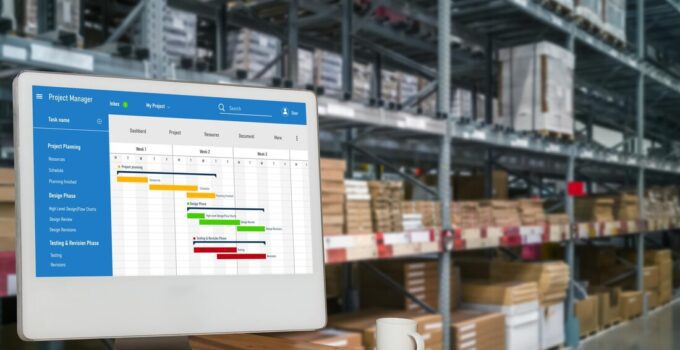When relying on surplus goods and liquidation pallets for your business’s inventory, you have to make sure you know how to analyze it. It is quite common losing lots of resources and time by not having the correct type of strategy and analysis process in place.
To begin with, many beginners and people with not that much experience in reselling tend to omit the step. It isn’t until they have all their pallets in place and notice the losses than they are able to see the mistakes made along the way.
For resellers and bulk buyers, the ability and knowledge to analyze liquidation manifests is crucial and interchangeable. It is essential to minimize risks, maximize profits, and ensure you build brand reputation.
Coastal Surplus Solutions is quite aware of all the steps involved and how you need us to work through it.
We have been in the industry of sourcing pallets, working with liquidations, and streamlining processes for a long time.
We can be there to support your sourcing, or to offer support in analyzing and understanding your pallets.
Here, you will have a step-by-step pallet manifest analysis guide to help you evaluate inventory, spot red flags, and make data-driven decisions.
Manifest Components: Item Descriptions, Quantities, Conditions
For those new to the process, manifests are lists of items that are on the liquidation pallets. They can offer detailed or general information about the process. It all depends on the supplier and seller.
What you care about it analyzing them to search for key information about the details and what the pallet may include. This is why you need to keep an eye on the typical information in them:
- Item Descriptions: Detailed product names, SKUs, or UPCs. This helps you identify exactly what’s in the lot and research market value. While a few details are left out, it is easy to work on the idea of what the item is and the brand or even serial number.
- Quantities: The number of units for each product. Bulk quantities can boost profits but may also increase risk if demand is low. You need to consider what is in there that will balance the rest of the low-value or slow-selling products you have.
- Conditions: Grading such as New, Like-New, Used, or Salvage. “New” and “Like-New” items are easiest to resell, while “Used” and “Salvage” require more effort and may have lower resale value, they are worth to leverage your inventory.
A good mix of different items is always viable as long as you take the time to know the condition.
What most resellers do is combine and bundle the pieces. It is possible to do and can bring great results in the overall approach and revenue.

Category Analysis: High-Value vs. Low-Value Product Mix
As mentioned before, a good mix is always good.
However, how can you work on it while considering the variants involved and getting control over your inventory and revenue?
You need to go over the items, their categories, and understand what you have and don’t have.
Since not all items in a manifest are created equal, you need to perform a smart liquidation inventory assessment:
- Sort by Category: Group items by their categories. Have electronics, apparel, home goods, or other options to assess which categories dominate the load and understand what you have and can sell well.
- Identify High-Value Items: Focus on products with strong resale markets or high demand. Pull UPCs for items valued above a certain threshold and research recent sales on eBay or Amazon. You may get tired, but learning about products and going for continuous research will make a big difference.
- Assess Low-Value or Niche Items: Consider whether you have a reliable buyer base for these products, or if they’re likely to linger in inventory. If it is the latter, you want to move away from them and focus more on the high-value ones.
A profitable manifest has a healthy mix of high-value, in-demand items and manageable quantities of less desirable stock. These are often provided in detail and by reliable suppliers.
Hence, from whom you buy your pallets also matters to be able to profit from your resales.
Red Flags: Vague Descriptions, Missing Information, and Unrealistic Values
If it is too good, it isn’t real. If it is inflated, it isn’t worth it.
The same occurs when you have to deal with descriptions that say a lot and nothing at the same time. if it isn’t detailed or offers a good view, it isn’t worth the time or investment unless you are certain it will be a good option.
Missing information or anything that feels slightly off in conditions and what you can find enter this list as well.
Analysts from BBB and several bulk purchase markets agree on how pallets may not be a scam, but they definitely bring nothing to the table.
You need to go over manifest reading for buyers, what is truly valuable, and work from there for your best interests.
Liquidation manifest evaluation is never easy, but it is what drives your profits to your side.

Decision Framework: ROI Calculations Based on Manifest Data
While everyone would love to make decisions after checking the pallet, manifests are the closest to it.
To make an informed purchase, you will have to rely on the details given and trust your instincts for the purchase. Once you have committed to an idea and before purchasing it, consider how much you can make with the products you believe are in it:
- Estimate gross sales from the quantity of each item and their realistic prices in all markets.
- Calculate total costs, not only the lot cost but also shipping and logistics.
- Assess sell-through rate in terms of time. How quickly will this inventory or item take to move?
Always go over a proper formula of your expenses and how ROI works.
Our recommendation is following the usual calculation:
ROI = Estimated Gross Sales – Total Costs
Total Costs
An example for this is: If your total costs are $12,500 and your estimated sales are $20,000, your ROI would be 60%.
Coastal Surplus Solutions can help you analyze manifests, connect with the surplus goods, and make sure your investment is worth it. We also help with liquidation inventory assessment and any type of lots.
As mentioned by FasterCapital, expertise and professional strategy are always worth for cost reduction and time management. You get to streamline logistics, and focus your attention on other areas of your business.
Feel free to contact us and gain this advantage for your business.




